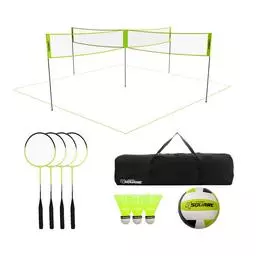Dart Throwing Stance
How you face the dartboard plays an important role in throwing a good dart - a good dart being one that flies true and close to the mark. For a more precise definition of true, let's define that as a dart that doesn't fishtail in flight - a dart that hits the dartboard on a line perpendicular to the face of the dartboard, at a slightly raised angle.
A dart that lies in the dartboard flight down, or off to the right or left of the line of travel, has problems, If you would throw true darts with consistency, the foundation of good dart flight and accuracy begins with your stance.
There are two basic approaches to stance in dart throwing. You can place both toes on the line and square your shoulders to the dartboard, or you can place one foot behind the other, and angle your shoulders toward the board.
The advantage of having both toes on the line is stability. Both feet are flat on the floor and excess body motion in the throw is nil. In theory, this is the way to go. In practice, this stance is unnatural and rigid; few really good players employ it. I tried throwing this way but just couldn't get comfortable. However, if you are new to the game, this stance is so solid and steady, it is worth trying. What doesn't work for one player may prove to be just the ticket for another.
The more common stance for right-handed players puts the right toe on the line, with the left food slightly behind and the shoulders angled to the board. This is a more comfortable and natural stance for me, but it is also fraught with potential glitches. Many players who use this stance tend to tiptoe on the ball of the right foot and lean toward the board. Sometimes forward lean is so exaggerated; the left toe barely touches the ground. This might shorten the distance from the dart hand to the face of the board by a couple of inches, but it's like trying to throw a dart while walking a tightrope. If you have a nice sturdy floor beneath you, you might as well take advantage and lay the sole of both feet flat.
I see many players leaning forward and hopping toward the board with each throw. Consistency becomes progressively more difficult to maintain as the night wears on and the pints accumulate. The more body motion you have in your throw, the harder it is to repeat that exact motion. Movement in a dart throw should come mainly from above the elbow - the forearm, the wrist and the fingers.
So in summary, good stance is one that encourages balance and comfort, and one that keeps "body English" to a minimum. You may find the exceptional player who does a lot of lunging at the board, but the hardest players to beat are rock steady in their stance. Strive to minimize movement on the body side of the elbow.
Until Next Time!
Tony
.jpg)


